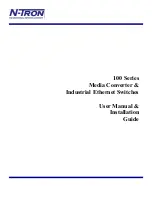
262
Step Command
Remarks
7.
Specify the local IP address of
the IPsec tunnel.
local-address
{
ipv4-address
|
ipv6
i
pv6-address
}
By default, the local IPv4 address
of IPsec tunnel is the primary IPv4
address of the interface to which
the IPsec policy is applied, and the
local IPv6 address of the IPsec
tunnel is the first IPv6 address of the
interface to which the IPsec policy
is applied.
The local IP address specified by
this command must be the same as
the IP address used as the local IKE
identity.
8.
Specify the remote IP address
of the IPsec tunnel.
remote-address
{ [
ipv6
]
host-name
|
ipv4-address
|
ipv6
ipv6-address
}
By default, the remote IP address of
the IPsec tunnel is not specified.
9.
Set the IPsec SA lifetime.
sa
duration
{
time-based
seconds
|
traffic-based
kilobytes
}
By default, the global SA lifetime is
used.
10.
(Optional.) Set the IPsec SA
idle timeout.
sa idle-time
seconds
By default, the global SA idle
timeout is used.
11.
Return to system view.
quit
N/A
12.
Set the global SA lifetime.
ipsec
sa
global-duration
{
time-based
seconds
|
traffic-based
kilobytes
}
By default, the time-based SA
lifetime is 3600 seconds, and the
traffic-based SA lifetime is
1843200 kilobytes.
13.
(Optional.) Enable the global
IPsec SA idle timeout function,
and set the global SA idle
timeout.
ipsec sa idle-time
seconds
By default, the global IPsec SA idle
timeout function is disabled.
Configuring an IKE-based IPsec policy by referencing an IPsec policy template
The configurable parameters for an IPsec policy template are the same as those when you directly
configure an IKE-based IPsec policy. The difference is that more parameters are optional for an IPsec
policy template. Except the IPsec transform sets and the IKE profile, all other parameters are optional.
A device referencing an IPsec policy that is configured by using an IPsec policy template cannot initiate
an SA negotiation, but it can respond to a negotiation request. The parameters not defined in the
template are determined by the initiator. For example, in an IPsec policy template, the ACL is optional.
If you do not specify an ACL, the IPsec protection range has no limit. So the device accepts all ACL
settings of the negotiation initiator. When the remote end's information (such as the IP address) is
unknown, the IPsec policy configured by using this method allows the remote end to initiate negotiations
with the local end.
To configure an IKE-based IPsec policy by referencing an IPsec policy template:
Step Command
Remarks
1.
Enter system view.
system-view
N/A
















































